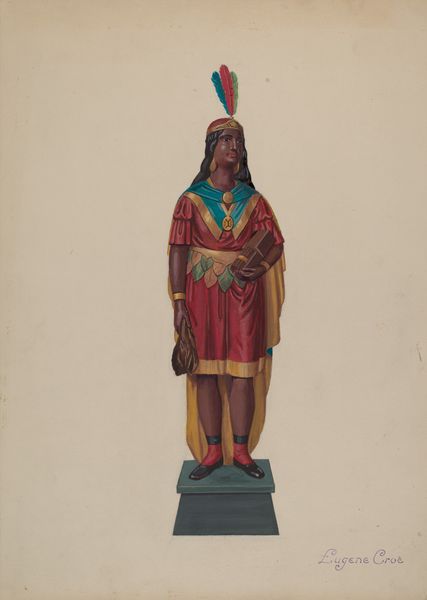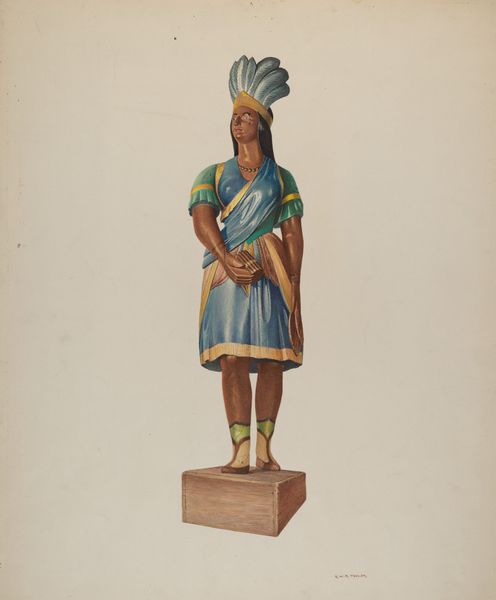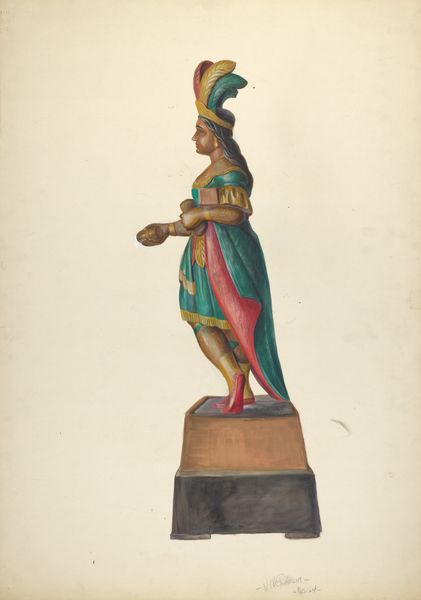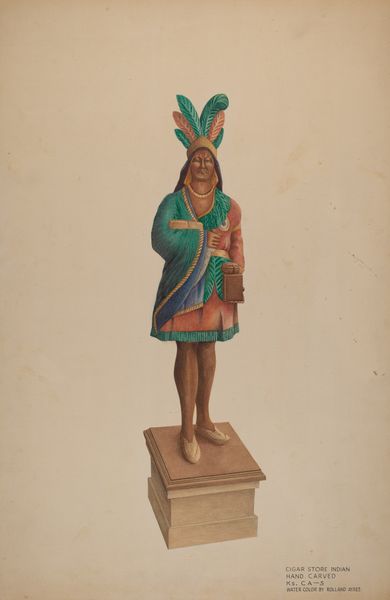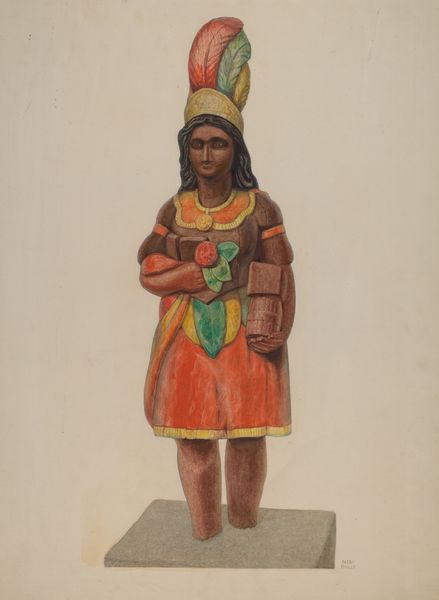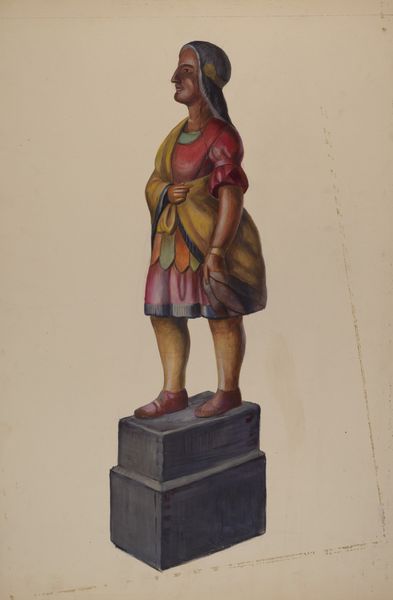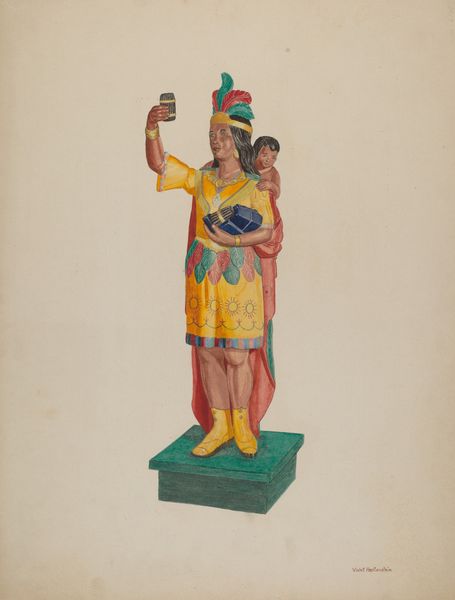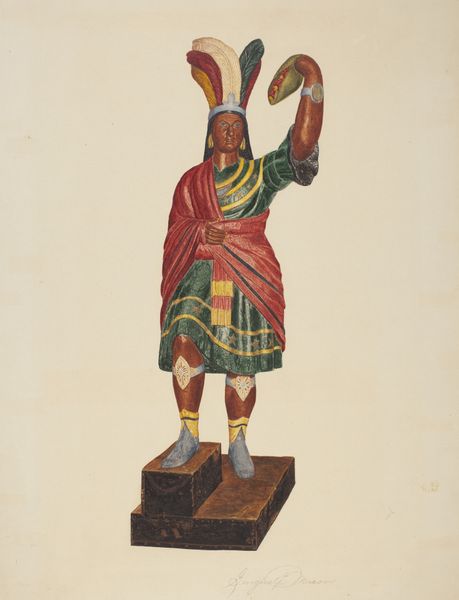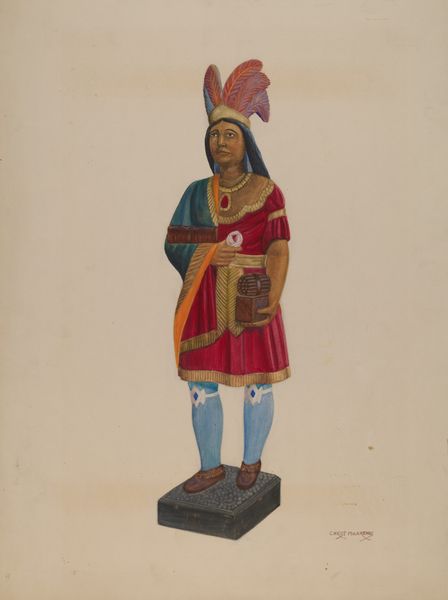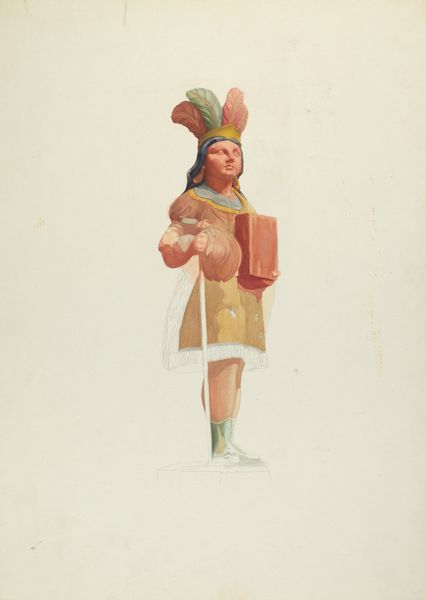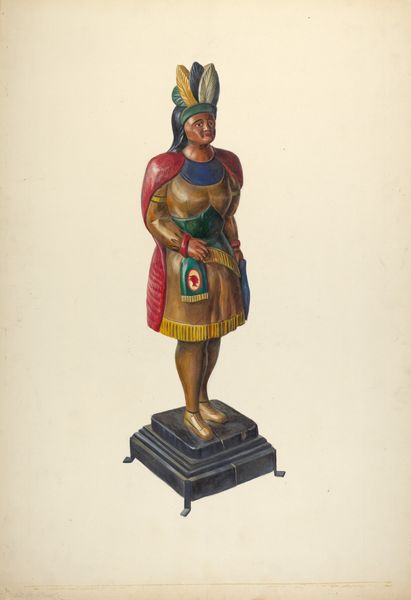
drawing, paper
#
portrait
#
drawing
#
caricature
#
figuration
#
paper
#
portrait drawing
#
watercolour illustration
#
watercolor
Dimensions: overall: 50.9 x 38 cm (20 1/16 x 14 15/16 in.)
Copyright: National Gallery of Art: CC0 1.0
Curator: Well, hello there. What a striking figure. Editor: Yes, she immediately struck me, especially the colour combination. Very bold use of contrasts, the green of her skirt against that pink in the sash, almost a jarring aesthetic... I'm wondering if that's intentional, part of the commentary perhaps. Curator: That's a great jumping-off point. Let’s unpack what’s in front of us. This watercolor illustration, dating from around 1937, is titled "Cigar Store Indian" by Eugene Croe. What's compelling is the history of its reproduction, it seems. We should examine its relation to commercial usage. Editor: Absolutely, the intersection of Indigenous representation and capitalist consumption is right there. It invites considering how the "noble savage" trope became commodified and how that imagery was put to work. The means of representing this…figure. Curator: Right. Think about the materials: watercolor on paper – a far cry from the carved wood of the actual cigar store figures, a deliberate act in choosing an easier to handle and readily produced form. I see that process speaking to this culture of easy appropriation, taking something heavy, something laboured over and turning it into an easily disseminated image. Editor: And of course, that commercial context profoundly shapes how the public has come to view Native American people. How the proliferation of this kitsch has impacted both indigenous self-perception and external perception of a complex community. Did Croe consider how the piece participates in or critiques that tradition, by converting 3-d sculpture back into illustration? Curator: An interesting point. Considering the date, 1937, it may well reflect a growing awareness of these issues within popular culture itself, rather than simple reproduction for sake of revenue. The rendering isn’t wholly uncritical, no romanticization. Is this presentation subverting those traditions, offering an unromanticized, arguably objective gaze at an indigenous model and stereotype simultaneously? The materials and their intended use here really complicates this discourse of labour and cultural commodification. Editor: Exactly. It's these layers that create complexity, that push beyond a surface reading of mere cultural appropriation. It really pushes us to confront the role images like this continue to play in perpetuating and sometimes dismantling harmful stereotypes. Curator: And, you know, thinking about process here, too...this piece creates more discourse simply in how it’s produced than by what. Editor: I completely agree.
Comments
No comments
Be the first to comment and join the conversation on the ultimate creative platform.
